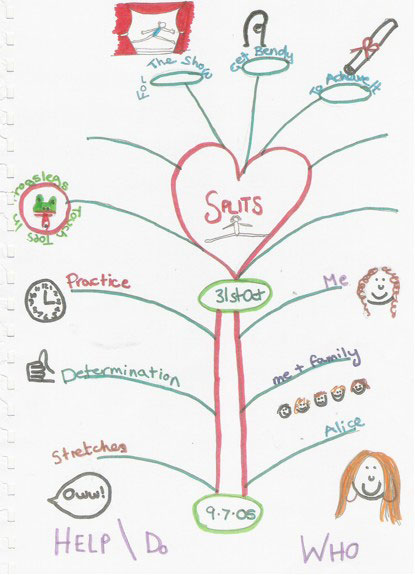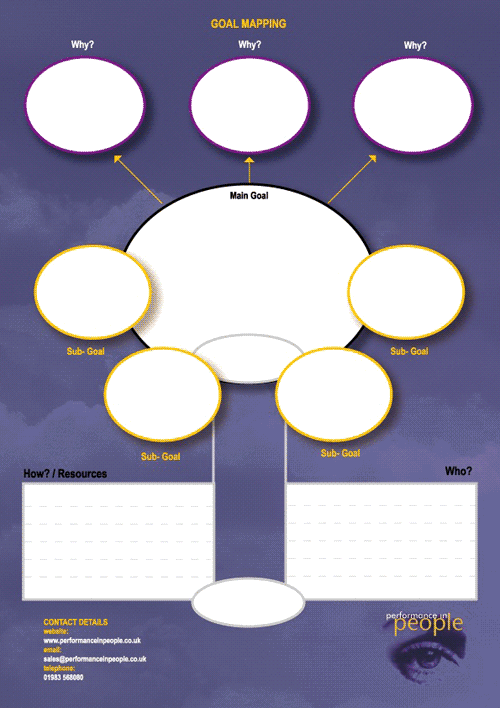When different projects and ideas are stacking up in front of you, it can be hard to work out which one you should view as your primary goal – and even tougher still to establish how to achieve it. Here, Nick Drake-Knight talks us through the steps we need to take if we’re to realise our goals.
Goal setting isn’t new to business. Epictetus had it covered back in AD135 when he advised his peers: “First say to yourself what you would be; and then do what you have to do”. The key to goal achievement is to be clear on the precise nature of your goal ambition. Or, to use Epictetus’ old style language: “What would you be?”
“First say to yourself what you would be; and then do what you have to do”
Yale University identified the power of goal setting in a career development study that began in 1953. In this study, 3% of the original group established and wrote down clearly defined goals. Twenty years later, the surviving members of the group met up. The ‘goal setters’ had accumulated more net wealth than the remaining 97% put together.
Of course, wealth is only one definition of success, but the study does tell a story. The reality is that goals work best when they are ‘compelling obsessions’: really strong desires that are at the forefront of our minds at all times. Psychologist Alfred Adler knew a thing or two about goal-directed thinking. Adler’s psychological principles focused on ‘teleological’ outcomes: that is, action-centred and solution-oriented results.
Adler’s emphasis on a goal-directed approach to personal change has wide-ranging applications. His argument that humans are teleological in nature acknowledged that the goals we set ourselves may be positive or negative, helpful or hindering. The self-statements of ‘I am going to succeed’ or ‘I am going to fail’ are equally powerful and lead us towards that stated aim. In essence: ‘we find what we are looking for.’
Tentative Language
When we give our unconscious mind tentative instructions, it takes no notice. Our unconscious mind is a lazy teenager sprawling on the sofa, eating pizza. Unless we give it firm instructions, it will take the easy option and do nothing.
When we give firm messages to our unconscious mind we can achieve remarkable things. Waking up just before the extra-early alarm clock sounds is an illustration of how (just for once) we have given firm and clear orders – and the unconscious mind does what it is told. Sometimes we can ‘sleep’ on a problem and instruct our unconscious mind to find a solution for us. Often the answer comes to us ‘miraculously’ later on.
Goal setting and achievement follows the same pattern. Goals must be firmly embedded as compelling obsessions if our unconscious mind is to take notice and take action. Wishy-washy ‘hopes’ are ineffective. A clue to the strength of our goal setting conviction can be found in the language we use.
People use language that reflects the strength of conviction in their instructions to their unconscious minds. Listen carefully to the language people around you use with themselves, and then listen to your own. Sound your internal alarm bells when you hear yourself or others using phrases like:
- Hopefully it will happen”
- We will probably get it to you on time”
- I might be able to do that”
- We should deliver it by then”
- I’ll try and do it”
In a rough paraphrase of Yoda from Star Wars: “There is no ‘try’. Only ‘do’ or ‘no do’. No ‘try’.” Translate this to common personal goals and you will recognise the dangers of weak goal messages. Quitting smoking? Losing weight? ‘Try’ is no good. Goals must be supported by definite and direct self talk.
Mind Mapping and Goal Mapping
A compelling obsession will only work if there is a strong emotional driver behind it.
Creating a ‘goal map’ can help identify the emotional driver that is the true reason behind your goal. Most goals are driven by a desire to move away from pain or to move towards pleasure. What is the driver behind your goals? Be honest!
By committing your goals to paper you can send a strong and direct message to your unconscious mind. The written text of your goals works well for your left brain, the hemisphere that works best in a logical and analytical manner. The challenge is that it is difficult to recall the written word. Our brains are much better at recalling information that is stored visually in pictures and images than in written ‘word’ form.
This is why mind maps work so well. Good mind maps consist of pictures – the sillier and more outrageous the better – because we take a cerebral photograph of the images and recall the location of each image on the original mind map.
Translating the silly image in to meaning is then pretty straightforward. For example, I have a mind map of Poland that I use for illustration purposes. One image on the map is of a brown cow and a speech bubble “Moo!” The brown cow represents the bison that graze in the forests of the Zubrowka region of Poland. A blade of grass from the Zubrowka forests is inserted in each bottle of Zubrowka vodka giving the liquid a pale yellow colour. It’s a lovely drink mixed with fresh orange juice called vodka sok pomaranczowy. Make sure you try it when you go to Poland. The brown cow picture is daft, but I can remember exactly where it is on the mind map and it helps me recall a few vodka-related stories (hic!).
Goal mapping follows a similar principle in that creating a goal map requires left brain writing and right brain pictures that we can photograph in our minds and use as a reference and reminder of our committed goals.

It works for all ages, too. The goal map below was drawn by my (then) 13-year-old daughter Rosie who was determined to ‘do the splits’ in time for a performance at our local school of dancing.
Notice how she has drawn the images as well as written the words? The true power of goal mapping is the ‘why’ questions at the top of the map. These are the motivators and it is here that the emotional driver is often uncovered by careful questioning of your self.
Why do you Want to Achieve This Goal? Why Else? And Why Else?
By the third ‘why’ most people have reached the true reason, and it will almost always relate to a desired feeling (movement towards future pleasure) or a desired absence of feeling (movement away from current or feared pain).
This is the compelling obsession that drives us towards achieving our goals. In Rosie’s case there was a sequence of ‘why?’ responses as follows:
- Why do I want to do the splits? – “For the show”
- Why else? – “To get bendy”
- Why else? – “To achieve it” (She was moving towards a ‘feeling’ of personal achievement)
Goal mapping is not just for kids, though. It is now used extensively in personal development training in commercial environments. Virtually any business context that has a performance-based culture can make good use of goal mapping.
So: what would your goal map look like? There is a blank goal map and instructions at the bottom of this article. Start thinking and fill in the gaps with your own version. Fortunately it doesn’t have to include doing the splits – and I’ve even included some instructions to help you on your way.
In Conclusion
Finally, while goal setting or ‘goal mapping’ is a powerful mechanism for creating change in your life – both professionally and in your personal life – there is a difference in knowing what to do and doing what you know.
Your goals will only be achieved if you take action. We all have occasions when we put things off. When the time does come to make it happen, Epictetus is spot on again. He recognised that eventually you just have to get on with it:
“And if you are confronted with a hard task or with something pleasant, or with something held in high regard or no repute, remember that the contest is now, and that the Olympic Games are now, and that it is no longer possible to delay the match.”
Set your goal NOW, make sure it is a compelling obsession, and take massive action, NOW!

Instructions for goal mapping
- Identify your single most important work goal. Make it a compelling obsession.
- Write your main goal on the goal map in the big bubble. * When describing this goal use present tense; it’s really important.
- Identify the emotional reasons why you want to achieve your goals and write these on the goal map in the ‘why’ bubbles at the top of the page.
- Now decide by when you want to achieve the main goal and write this onto the goal map. Write today’s date on there too in the bubble at the bottom of the page.
- Identify the major steps that you will want to take to achieve your goals. Write these down in the sequence that they will need to be completed.
- Identify when the above steps will need to be completed and write this onto the goal map in the middle column.
- Identify the people who you would like to help you achieve those steps and write this on the goal map. This will include yourself, of course.
- Develop your sub goals that will indicate you are on the way to achieving your main goal.

Now you have completed this left brain exercise, complete a right brain goal map by representing everything on your left brain goal map in pictures. Make them as bright and colourful as you can.
Don’t worry about your skill as an artist: they only need to mean something to you.
NB: This goal map information is adapted from original (and excellent!) work by Brian Mayne of LIFT International
Nick Drake-Knight is an author and freelance writer.
Author: Jonty Pearce
Published On: 4th May 2007 - Last modified: 11th Aug 2025
Read more about - Call Centre Questions, Call Centre Answers





































